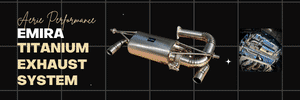I found the thread while researching if anybody had done it lol. Figure I'd update with my findings. I am gonna put together a parts list later. If you decide to give it a go and need the 3d printed adapter just hit me up.Thank you for the response and write up from my oooooooold post.
I had forgotten about it. Good info, and something I am encouraged to do thanks to your sleuth work.
I had one in my twin turbo 370Z!Now just get to work on a methanol injection system for me....
With every engine there is an amount of air that ends up on the under side of the pistons. Piston rings do not create a perfect seal. As the pistons pump up and down it pressurizes the bottom of the engine relative to the head which is connected by the oil drain back gallies.
If this pressure increases in a perfectly sealed engine you would reduce HP as the pistons would have more and more air to push against. And the combustion conditions will always be more pressure which is why it will be additive. This is especially true for turbo and supercharged engines, as well as those with really high compression ratios.
Factory cars look for ways to relieve this buildup in pressure. Typically through breather tubes connected to the vacuum of the intake manifold or pathway.
These tubes bring that air and pressure, but because of the turbulent environment of the crank and heads the air never really comes alone. It comes with oil be vapors and other deposits which normally would stay in the engine that are now being introduced to the intake pathway.
It can be a surprising amount. Catch cans are trying to mitigate as much as possible. On direct injection cars my catch can has been very fuel heavy as well. All that stuff would be coating intake valves.
nailed it







